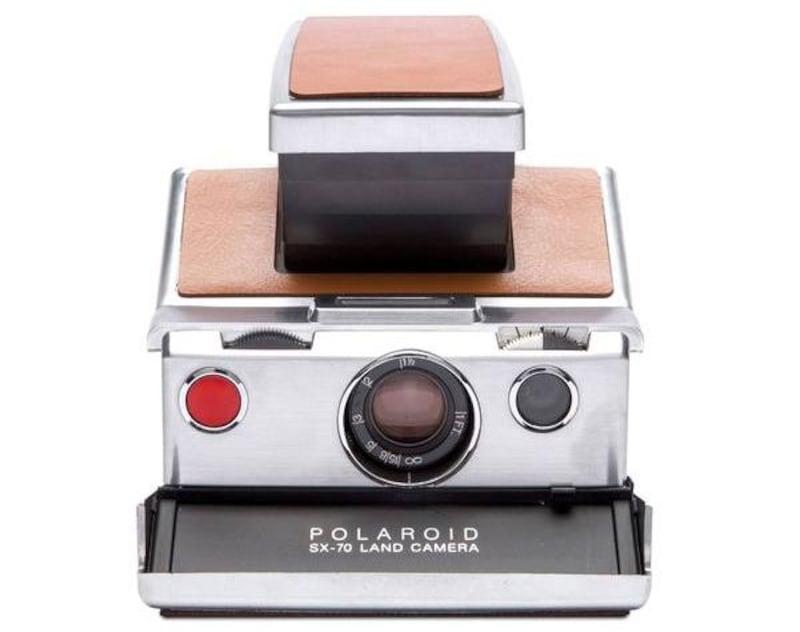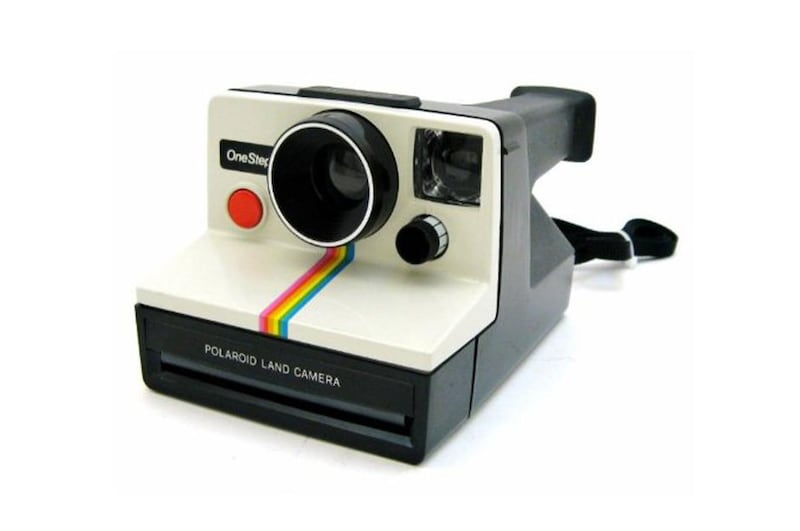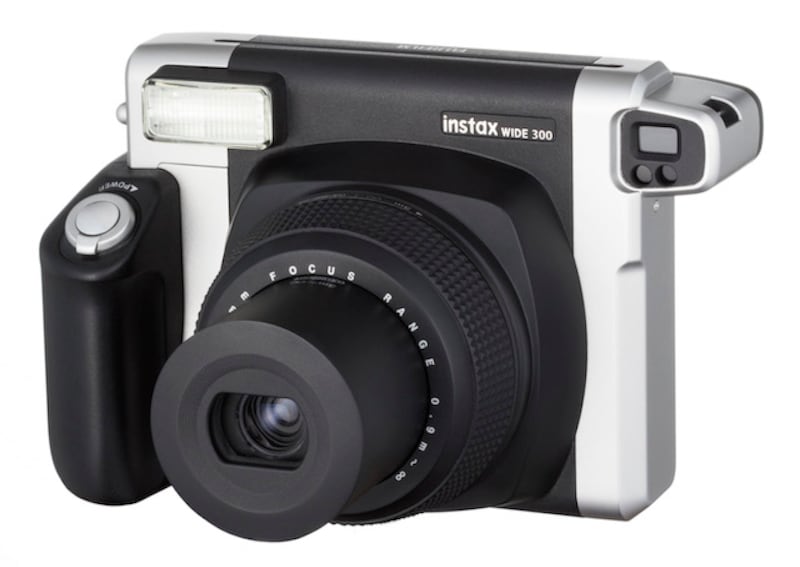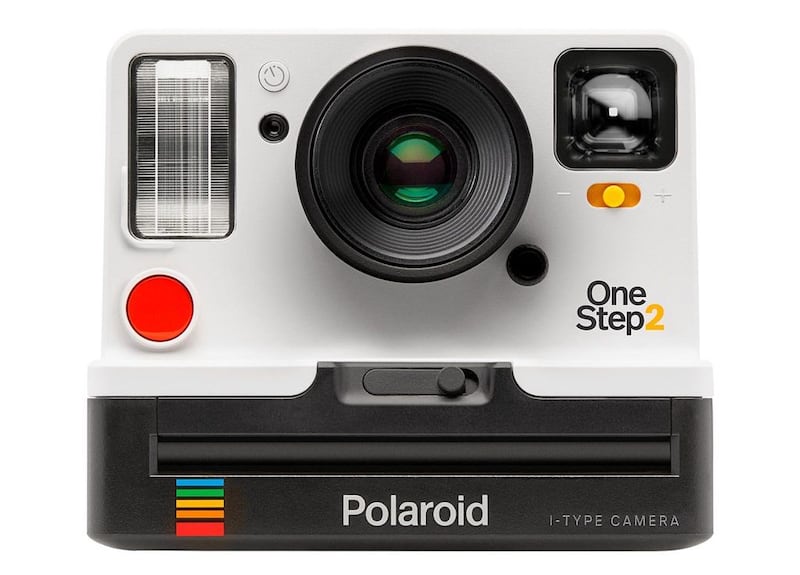"My mantra during the Impossible days was a quote by Edwin H Land: 'Don't undertake a project unless it is manifestly important and nearly impossible.'" – Florian Kaps, Impossible Project founder.
In February 2008, Polaroid announced it would stop producing film for its cameras. According to Polaroid back then, the picture was devastatingly clear: digital photography had decimated film photography, and, as the years progressed, developing film or sticking with an instant camera was the preserve of purist professional photographers, hobbyists or outright nerds who were holding onto the analogue technology. Smartphones, digital photography and images consumed through social media platforms struck a blow from which film photography will probably never recover. Kodak consumer film sales dropped to less than 1 per cent of what they were at their peak.
While getting photos developed is now almost a curiosity, and darkrooms and lumbering machinery were replaced by ATM-sized kiosks in chemists, 2017 was probably the most hopeful moment for instant photography in years. Behind this mini-revival was a company astutely named Impossible Project, along with a couple of key cameras that have brought instant photography back towards the edges of the mainstream.
A few months after Polaroid's announcement in 2008, a man called Florian "Doc" Kaps met a Polaroid employee, André Bosman, at a closing event for Polaroid's factory in Enschede in the Netherlands. Kaps took his first Polaroid photo in 2003, after picking a camera up at a flea market. In 2005 he launched an online shop specialising in Polaroid film. Upon meeting Bosman, Kaps resolved to start a company that could produce film for the countless Polaroid cameras that were still in existence, an intention that seemed almost ludicrous given the scale and expertise required to essentially reinvent Polaroid's chemistry. In October 2008, the newly named Impossible Project bought machinery from Polaroid for over $3 million, and leased a factory building that used to be part of Polaroid's plant in the Netherlands. Over email, Kaps detailed his "fierce belief" at the time, saying, "My philosophy is inspired by all the makers, tinkerers, inventors, believers and creators who pursue their analogue craft and ideas with 120 per cent against all odds and prophecies."
Feel-good startup
Impossible Project became a feel-good startup. Instead of “disrupting” existing technologies, it set out to preserve one that was vanishing because of such digital disruption. But the process of recreating Polaroid film wasn’t straightforward. Instant film is chemically volatile. In 2010, the first Impossible instant film, PX 100, came on the market. Early Impossible Project film sometimes had a pot luck quality to it. Users were urged to store the film stock in their fridges to keep it stable. Airport X-ray machines radiated already sensitive film. As more film was produced, the quality got better but, in imperfect environments, the results were mixed, especially when combining the film with old cameras.
Those early days for Impossible showed how sophisticated Polaroid instant film actually was.
Edwin Land was the co-founder of the Polaroid Corporation, and immortalised in Land Cameras, the name given to the instant cameras he invented, the first of which – the Polaroid Land Camera Model 95 – went on sale in 1948. The process created for Land’s cameras saw dyes transferred from negative to the “positive” photograph using a chemical reaction. The negative is exposed and then sandwiched on to a positive sheet, with the reagent between them diffusing the fast-developing negative image on to the positive one, creating the printed photograph relatively quickly. Initially the negative was peeled off the image, but as instant film became more sophisticated, the time the images took to develop shortened, and it was no longer required to peel the negative from the positive.
Polaroid Colorpack 80 advanced the cameras from models with folding bellows to a non-folding piece of kit, but it was the SX-70 models that arrived from 1972 onwards and then the iconic Polaroid OneStep (1977), with its white casing and vertical rainbow stripe down the front, that secured Polaroid as a the ultimate instant camera company, especially with self-developing film which developed in daylight.
Intellectual property
In 2017, 40 years after the Polaroid OneStep came on the market, the impossible happened. Since last year, Impossible Project is now known as Polaroid Originals. Impossible Project’s largest shareholder acquired both the Polaroid brand and its intellectual property. When the Smolokowski family acquired a 20 per cent stake in Impossible Project in 2012, Kaps left the following year, and, in 2014, Oskar Smolokowski, then in his mid-20s, became CEO. With the Polaroid acquisition, Smolokowski became CEO of Polaroid Originals.
“He fought very hard to save the last factory and managed to pull it off at the last second,” Smolokowski said also over email about Kaps, “The next chapter was harder. Reinventing the film took more time, effort, knowledge and money than anyone could have predicted. Almost no one knows this, but instant film is one of the most chemically complex manmade products. Recreating the magic and complexity of Polaroid’s chemistry at a much smaller scale was no small feat.”
The triumph of Impossible Project, now Polaroid Originals, is a victory for the analogue world, and it has also introduced and preserved the art and fun of instant photography. But there’s also something more intangible behind this, a feeling about what we are giving up to embrace digital formats. While digital technology is advancing, we are losing much of the tactility and niceness of analogue objects. The digital world creates a paradox where we are reminded that digital versions of everything from photographs to messages last forever, yet they are also simultaneously “not there”, existing in servers or digital files.
“To me, what makes the analogue so appealing in a digital world, is that we are in the end human beings who are living through their senses and who are here to leave traces on earth,” Kaps wrote over email, “You just can’t do that with your mobile phone and digital data.”
While Impossible was working on its technology, Fujifilm was enjoying success with its unlikely star, an instant camera called the Instax. While the popular mini Instax film can be seen as a little more gimmicky, given the small size of the negatives, the Instax 210 started to grow cult appeal. While the camera itself is clunky and almost Fisher-Price-like in its casing, the film size and results are great. That film, known as Instax Wide, was released initially in 1999, after the Mini versions had gone on the market, but this time, the negative size was increased, creating an image size based on the golden ratio.
Gimmick
Instax went from selling 100,000 cameras in 2004 to five million cameras in 2015. In 2016, Fujifilm sold 6.5 million cameras. That growth suggests that instant photography is no longer being seen as a gimmick, and instead, a generation that never knew analogue photography is discovering it for the first time, and other generations that remember it are falling back in love.
Elsewhere, Lomography sold one million units of film in 2014. That company grew out of a group of students in mid-1990s Vienna rediscovering the Lomo LC-A camera, a Soviet-era camera that provided inconsistent, sometimes distorted results. Its deficiencies were celebrated, and new retro-looking cameras were produced, with filtered flashes and fisheye lenses proving popular. Leica now also has its own instant camera, the Leica Sofort, and is producing its own instant film, as well as using the Fuji Instax format.
I would say we are sacrificing the notion of caring about the photographs
At a time of infinite digital choices, why is instant photography gaining fans? As Polaroid and 35mm cameras cluttered markets and secondhand stores, like many things “vintage”, a tipping point occurs when a product becomes something to throw out, and something to revere. If you grow up on digital, film is then “new”. When digital is default, discovering film is magic. An increasingly digital generation also fetishised analogue products, creating analogue cottage industries of sorts, with analogue technologies – film photography, vinyl records – becoming consumerist signifiers of resistance to “contemporary” technologies, looking back as culture was lurching dramatically forward. By embracing craft, analogue, local, slow, and essentially the past (from vintage clothing to “old-fashioned” jobs, such as small batch produce manufacturing), tactile technologies, such as film photography, were preserved in small pockets.
Shooting on film changes one’s relationship with the photograph. When it comes to instant film, the idea that it’s just one shot means that imperfections are accepted, and the feeling of the photograph is both evoked and captured because there is no rehearsal, repeat, or editing compared to digital photography.
“I would say we are sacrificing the notion of caring about the photographs,” Smolokowski says, when it comes to digital. “It’s not like we don’t care about digital photographs, but there’s definitely something to be said about not caring when and how often you press the shutter. That results in a much different style of photography, one that leads to huge amounts of photos being taken. Making the decision before you press the shutter button is so helpful in filtering out the photos that may not matter in the future. It’s a funny kind of way to think about a filter – the ‘will I ever care to look back at this photo?’ filter.”
Wrinkle-free
How the photos look has also helped. Instax, for example, shoots at ISO 800, meaning a high exposure gives a “smooth” effect, has a tendency to render skin blemish and wrinkle-free, giving faces a bright and almost youthful feel, which in a way feeds into its retro aesthetic: the pictures themselves aren’t just from another time, it creates a feeling as if the subjects in them are too.
The rise in popularity of instant photography also has to do with the niceness and the quality of the products themselves. Instant cameras are nostalgic, but they're also fun to use, and the results are special and much less throwaway than the endless shots taken on iPhones. Authenticity also plays a part at a time of excessive processing of images on platforms such as Instagram, were it has become harder to discern what is an authentic image. The desire for an authentic and unfiltered image survived in some places even throughout instant film's initial "demise". Ironically, it remained ubiquitous in the industry that spearheaded Photoshop, the model and fashion industry. Polaroid or other instant headshots are still typical in the files of models in model agencies, offering an authentic, often harshly lit depiction of the model, showing that with instant photography, there's nowhere to hide, and unfiltered beauty will come through.
Polaroid kept trying to find its feet in the digital age, making mobile printers, the Polaroid Z2300 instant digital camera, and the Polaroid Cube, which recorded HD video. Impossible also made its own camera, the slightly bizarre pyramid-shaped I-1 that also somehow managed to be reminiscent of an analogue dial telephone. In some ways, the Instax Mini is the natural successor of the Polaroid iZone, the pocket-sized 1999 camera that created small photographs and was briefly beloved by teenagers. As pocket-sized digital cameras grew less visible when smartphones took over as most people's primary camera, online photo-printing companies emerged using not film or memory cards as their source, but phone, Facebook, or Instagram photos, offering home delivery for prints.
I think people crave authenticity and purity, something that the brands of old seemed to have delivered on much better than the current juggernauts
While many of us take photos every day on our phones, sharing them across social networks and on WhatsApp, plenty of us are missing hard copy photo albums. We think we’re recording everything, but who of us are actually cataloguing our memories and holidays for posterity outside of the digital sphere?
Ephemeral
In reaction to the ephemeral nature of digital services, it probably makes sense that some “legacy” brands, such as Polaroid, are being reinvigorated.
“I think people crave authenticity and purity, something that the brands of old seemed to have delivered on much better than the current juggernauts, mostly in the tech world,” Smolokowski says. “It was all about physical products back then, with no internet available. In general, it was a much more simple and pure transaction – we make a product, you pay money and take it home. Now it’s more like, we deliver a great free service, but in return we know everything about you and sell this data to advertisers. Personal data was not what big brands were after back then, it was profit from great products. That’s also what drew me into this world as well, caring about the physical products that make people’s lives more fun or add value in other ways.”
In some ways, instant photography is the antithesis of the never-ending scroll of images on our feeds, but in another way, it complements it, and adds itself to the “instant” nature of wanting an image right in the moment. At the beginning of 2017, Kodak announced it would reintroduce Ektachrome, film initially discontinued in 2012. According to Kodak itself in announcing the return of Ektachrome, the film “is known for its extremely fine grain, clean colours, great tones and contrasts”. The film is being produced at the Kodak factory in New York, and Kodak is also reintroducing its motion picture equivalent for Super 8. Harman, which manufactures Ilford, is growing its film sales 5 per cent year on year. These small green shoots do not mean film will return to its peak. Fifteen years ago, 960 million rolls of film were sold in a year. Now around 2 per cent of that is sold.
But there is something happening with both the discovery and rediscovery of film, particularly instant film. Online, digital filters try to ape the “look” of film, but film already exists. Just because something is new doesn’t mean it’s better. Perhaps heralding the end of film was a bit like pulling up tram tracks, and then having to return years later to rebuild the infrastructure.
“I don’t think I have changed people’s relation [ship] to analogue photography,” Kaps says, “I’ve simply reacted to the learnings I had over the years, which is based on the experience that especially young people are bored by digital and appreciate the possibilities and characteristics of analogue. I’m glad I could do something in order to keep their passion alive.”
Iconic instant cameras

Polaroid SX-70
Now popular as refurbished models, the flat-folding instant camera was often leather-bound and remains as slick-looking as it did in the 1970s.

Polaroid OneStep
Cheap, durable and easy to use, this brilliant point-and-shoot camera became one of Polaroid's most successful.

Fujifilm Instax Wide 210 and 300
The cult camera that is still growing in popularity as Fujifilm tweaks and redesigns. Not the prettiest thing in the world, but produces excellent results.

Polaroid OneStep2
The offspring of Polaroid and Impossible Project, mission accomplished as Polaroid Originals, this retro-looking camera is as easy to use as the original and has an inbuilt flash.












